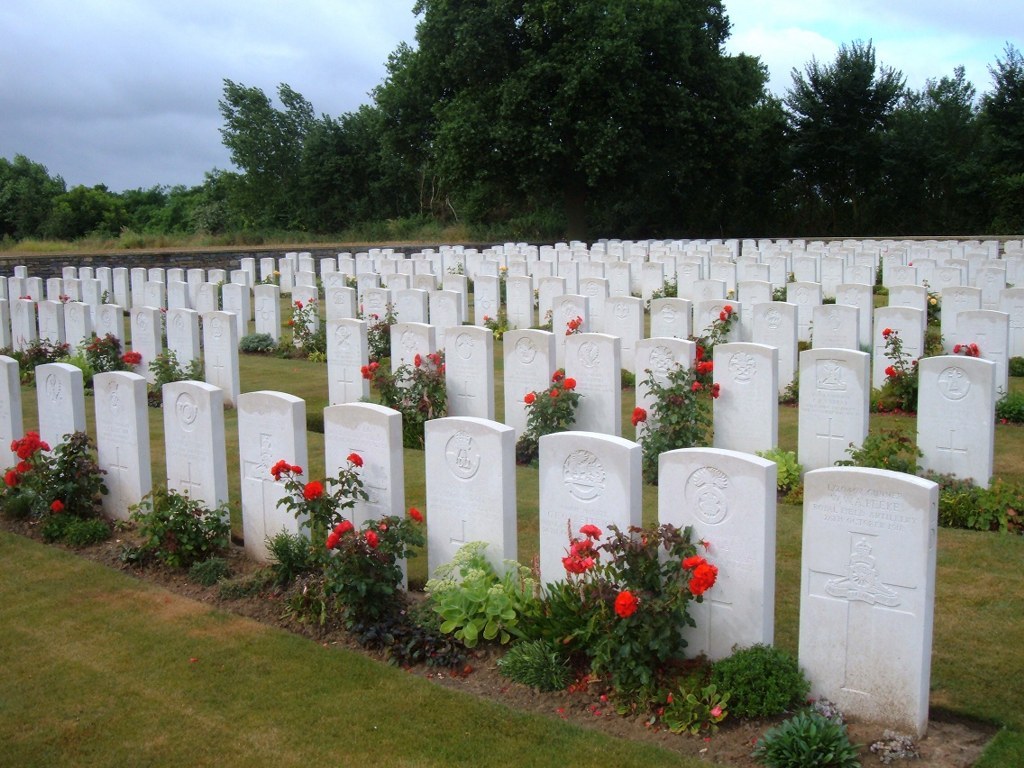John J Wallace
Date of birth: 1879
Date of death: 08.11.1918
Area: Outwood, Wakefield
Regiment: Army Chaplains Department
Family information: Son of John Lishman and Mary Ann Wallace
Rank: Chaplain 4th Class
War Service
Later John James Wallace became a Chaplain in the Army Chaplains Department and, in 1916, went to France. On joining the British Expeditionary Force, he was attached to the 8th Battalion, Gloucester Regiment, part of 57th Brigade, 19th (Western) Division.
The 19th Division went to France in July 1915 and its first major action was at Pietro, when it was used as a supporting / diversionary attack during the Battle of Loos. In 1916 the 19th Division was deployed to attack the enemy at La Bissell, High Wood, Pozieres Ridge, Ancre Heights and the Ancre, during the Battle of the Somme. 1917 saw the 19th Division involved at Messines, Polygon Wood, Broodseinde, Poelcapelle and Passchendaele, during the Third Battle of Ypres.
Heavy losses during the previous two years led to a re-organisation of the British Expeditionary Force and in February 1918 each Brigade was reduced from four to three battalions. At this time, the 8th Battalion, North Staffordshire Regiment, who had fought alongside the 8th Gloucesters, in 57th Brigade, was moved to 56th Brigade, within the 19th Division.
The battles of the Somme and the Lys followed, as the fighting continued throughout the spring of 1918. However successful Allied attacks during August 1918 saw the Hindenburg Line defences penetrated and commencement of the final advance in Picardy.
In September 1918 John James Wallace, Chaplain 4th Class, was moved to an attachment with the 8th North Staffordshire Regiment. By this time he had earned a reputation for wanting to be with the troops near the front line, sharing their dangers and discomforts. He had previously had his name put forward for recognition of his gallantry in action.
The Allied advance continued during the autumn, as the German Army withdrew eastwards. After a week of heavy fighting, on 25th October, the River Selle was crossed and on the 4th November the River Sambre was crossed. The enemy artillery still continued to bombard the Allied lines, aiming to disrupt the supply lines and slow the advance. On 5th November John James Wallace was helping Adjutant Captain Wood, who had been wounded, back the Aid Station, when he too was wounded. He was taken to a Casualty Clearing Station at Awoingt, some three miles from Cambrai, but on the 8th November 1918 he died from his wounds. He was buried in the British Cemetery at Awoingt, which now contains 653 Commonwealth burials from the First World War.
On the 14th November 1920 a plaque was unveiled in St Mary Magdalene Church, dedicated to the memory of John James Wallace. At this time his widowed mother was living at Dunvegan Gardens, Eltham, in south-east London.
Family Life
Born in 1879, John James Wallace was the eldest son of John Lishman Wallace and his wife Mary Ann, nee Beavis. John James, along with his three siblings, was born at Ramsgate, Kent, but lived much of the time with their mother in London. His father was a Superintendent employed by Trinity House and often away from home. The census of 1881 and 1891 shows the family at the home of their maternal grandfather, Benjamin Beavis, at Tower Hamlets, London. Later, along with his mother and three siblings, John James Wallace moved to Avenue Gardens, Acton. When living at Acton, at the home of his maternal aunt, Anne Beavis, he obtained employment at a silk warehouse.
It is not clear when John James Wallace entered the services of the Established Church, but in 1909 he became Assistant Priest at St Mary Magdalene Church, Outwood. At Outwood, he became a boarder at the home of John and Elizabeth Ward, of Church Lane. At this time his father had retired and his parents were living near Falmouth, in Cornwall.
Soon after war was declared, on 4th August 1914, an internment camp was established for German nationals, at Lofthouse Park. Eventually the camp held about 1,500 Germans, mostly civilians. Prior to joining the army, John James Wallace was a regular visitor to the camp, carrying out his work amongst the guards.
 Awoingt British Cemetery
Awoingt British Cemetery

